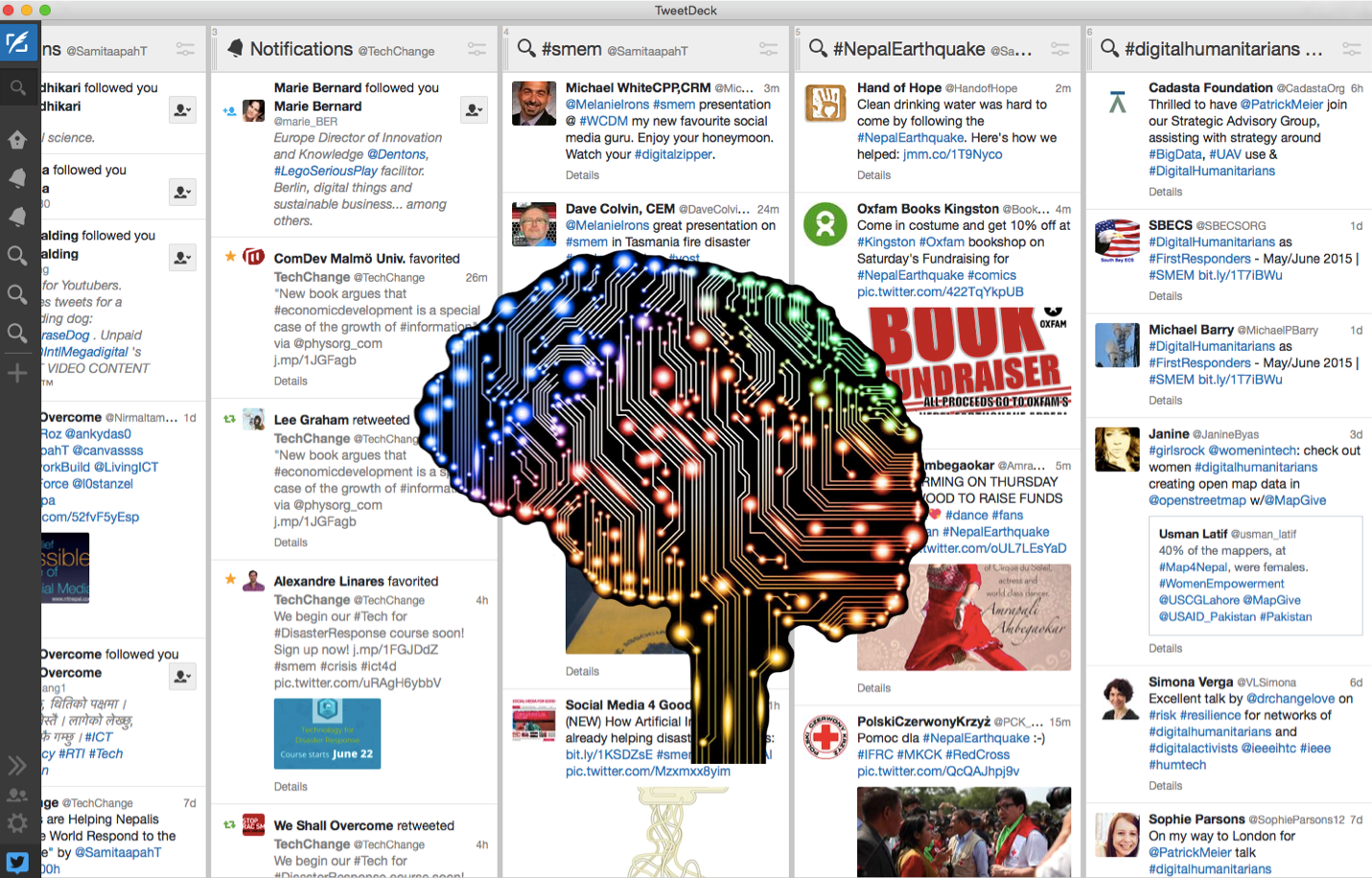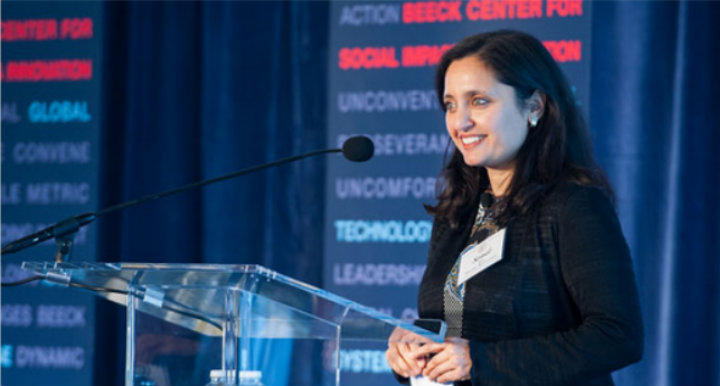When I hear the term “artificial intelligence”, my first thoughts go to HAL9000 and Data from Star Trek before settling on some vague notion about the Turing test. Clearly I’m not a computer scientist.
While reading Patrick Meier’s book, I realized that I had missed out on a wide range of advances in the field of machine learning, some of which also fall under “artificial intelligence”, which can help us make sense of the onslaught of information that we are faced with whenever a disaster strikes.
When the crowd gets overwhelmed
While nothing can beat the collective intelligence of a sufficiently large group of people that focus their energy on processing a lot of data, the problem with this type of crowdsourcing is that you need a very large group of people – and volunteers are a scarce resource.
Projects like Artificial Intelligence for Disaster Response (AIDR) from the Qatar Computing Research Institute (QCRI) are striving to make better use of the volunteer’s time. To do this, the AIDR algorithm is basically looking over the volunteers’ shoulders while they are processing a small amount of data. The machine learns from every decision, until it understands the patterns well enough to process the data itself. Datasets it is unsure about are returned to the volunteers for review and their decisions then improve the algorithm further. According to QCRI, the algorithm frequently reaches confidence levels of over 80 per cent, meaning that huge amounts of data can be analysed in a fraction of the time it would take volunteers.
You can test AIDR for free one the project’s website. If you want to know more, take a look at the video below.
Image analysis
The EU’s Joint Research Centre (JRC) as well DigitalGlobe, a company that provides satellite imagery and analysis, go even further: they are training their algorithms to interpret images. The JRC algorithm for example is already able to detect rubble for damage assessments in a city after an earthquake with up to 92% confidence, while DigitalGlobe is asking the crowd to teach its software how to recognize buildings on satellite photos. That information will no doubt be used to improve the company’s commercial products, but it is also being used to help fight malaria in Swaziland by providing aid organizations with a better idea of population density. This in turn can help program managers make decisions about where to commit the most resources.
You can support the malaria project through DigitalGlobe’s Tomnod platform here.
Another example, where this type of automatic population density data would have been useful, is the Ebola response, where population data had to be estimated manually, based on houses that first had to be mapped by OpenStreetMap volunteers. An algorithm that can automatically identify homes would have been much faster.
What I find amazing is that these tools are already working and available today. And while there are definitely still ways to improve them and bugs to work out, they make me very optimistic for the very near future of information management and needs assessment in disaster response.
What do you think about the role of artificial intelligence in disaster response? Comment below or tweet at us @TechChange. This post originally appeared on Social Media 4 Good.
If you are interested in learning about technologies like artificial intelligence that are helping in disaster response, join us in our upcoming online course “Technology for Disaster Response” which starts on 22 June.
About author
Timo Luege, TC103: Technology for Disaster Response Facilitator
After nearly ten years of working as a journalist (online, print and radio), Timo worked four years as a Senior Communications Officer for the International Federation of Red Cross and Red Crescent Societies (IFRC) in Geneva and Haiti. During this time, he also launched the IFRC’s social media activities and wrote the IFRC social media staff guidelines. He then worked as Protection Delegate for International Committee of the Red Cross (ICRC) in Liberia before starting to work as a consultant. His clients include UN agencies and NGOs. Among other things, he wrote the UNICEF “Social Media in Emergency Guidelines” and contributed to UNOCHA’s “Humanitarianism in the Network Age”. Over the last year, Timo advised UNHCR- and IFRC-led Shelter Clusters in Myanmar, Mali and most recently the Philippines on Communication and Advocacy. He blogs at Social Media for Good.





